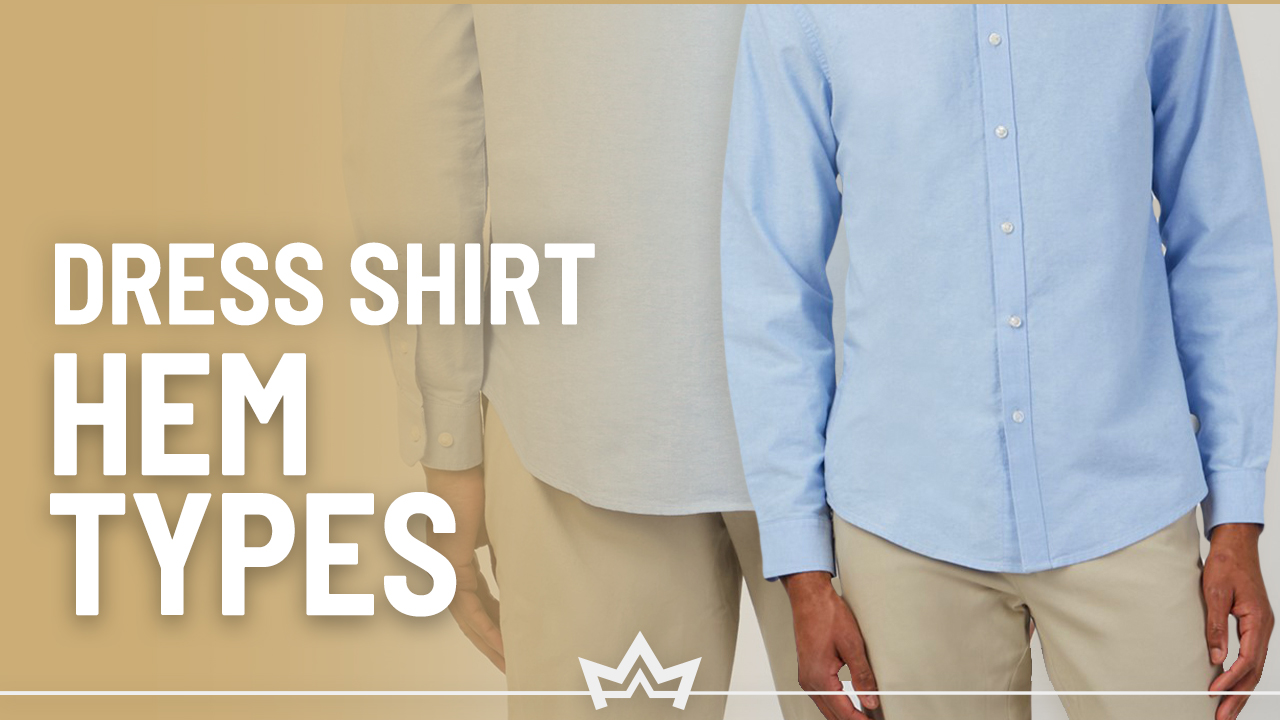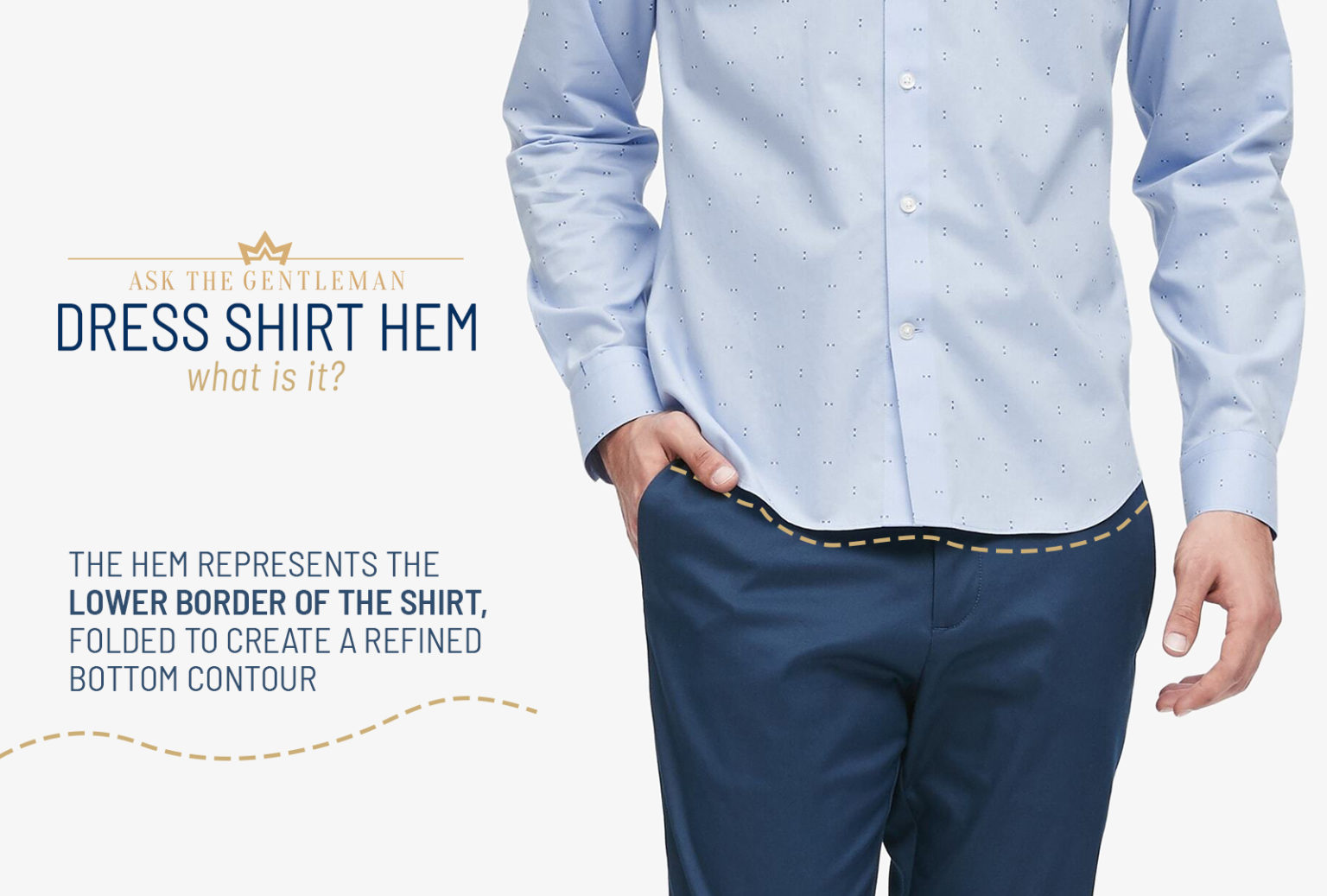The hem of a shirt is an essential detail that defines the overall appearance and durability of the garment. Whether you are a fashion enthusiast or someone who appreciates quality in clothing, understanding the significance of a shirt hem can make all the difference. The hem is not just a finishing touch but also an indicator of craftsmanship and attention to detail. In this article, we will explore everything you need to know about the hem of a shirt, from its importance to tips for achieving the perfect finish.
Shirts are a staple in everyone's wardrobe, and the quality of the hem plays a critical role in how the garment looks and feels. A well-finished hem ensures that the shirt maintains its shape and structure, providing a polished appearance. On the other hand, a poorly executed hem can lead to fraying edges and an untidy look, which can significantly affect the shirt's longevity.
In this guide, we will delve into the intricacies of shirt hems, offering practical advice and expert insights. Whether you're looking to sew your own shirts or simply want to understand what makes a high-quality shirt, this article will provide you with all the information you need. Let's get started!
Read also:Unveiling The Unique Traits Of May 8th Birthday Personality
Table of Contents
- Importance of the Hem of a Shirt
- Types of Shirt Hem
- Materials and Fabrics for Shirt Hems
- Techniques for Hemming a Shirt
- Essential Tools for Hemming
- Tips for Achieving a Perfect Hem
- Maintaining the Hem of a Shirt
- Common Issues with Shirt Hems
- Hem Trends in Fashion
- Conclusion
Importance of the Hem of a Shirt
The hem of a shirt is more than just a finishing line; it serves several functional purposes. Firstly, it prevents the fabric from unraveling, which enhances the durability of the garment. Secondly, a properly hemmed shirt provides a clean and professional appearance, which is crucial for both casual and formal wear. Lastly, the hem helps maintain the shape of the shirt, ensuring it fits well and drapes correctly.
Why a Good Hem Matters
A good hem is essential for several reasons:
- It ensures the longevity of the shirt by preventing fraying.
- It gives the shirt a polished and refined look.
- It maintains the structural integrity of the garment.
Types of Shirt Hem
There are various types of shirt hems, each with its own characteristics and applications. Understanding these types can help you choose the right hem for your needs or recognize the quality of a ready-made shirt.
1. Single Fold Hem
The single fold hem is the most common type, where the fabric edge is folded once and stitched. It is simple and effective, making it suitable for most casual shirts.
2. Double Fold Hem
A double fold hem involves folding the fabric twice before stitching, resulting in a more durable and finished look. This type is often used in formal shirts.
3. Blind Hem
A blind hem is designed to be almost invisible from the outside, making it ideal for lightweight fabrics. It requires precision and is commonly used in high-end tailoring.
Read also:Saweetie Dating History A Comprehensive Look At Her Love Life
Materials and Fabrics for Shirt Hems
The choice of materials and fabrics can significantly impact the quality of a shirt hem. Different fabrics require different hemming techniques and tools. For instance, cotton shirts are easier to hem than silk or synthetic fabrics, which may require special care to avoid damage.
Popular Fabrics for Shirts
- Cotton
- Linens
- Silk
- Polyester blends
Techniques for Hemming a Shirt
Hemming a shirt can be done using various techniques, depending on the fabric and the desired outcome. Here are some common methods:
1. Hand Stitching
Hand stitching is ideal for delicate fabrics and provides a high level of precision. It is often used in couture and custom tailoring.
2. Machine Stitching
Machine stitching is faster and more efficient for thicker fabrics. Modern sewing machines offer a variety of stitch options, making it versatile for different hem types.
3. Serger Stitching
A serger is a specialized machine that trims and finishes the edges of fabric simultaneously. It is particularly useful for stretchy or delicate fabrics.
Essential Tools for Hemming
Having the right tools is crucial for achieving a professional finish when hemming a shirt. Here are some essential tools:
- Sewing machine or serger
- Fabric scissors
- Pins
- Measuring tape
- Iron and ironing board
Tips for Achieving a Perfect Hem
To ensure your shirt hem looks flawless, consider the following tips:
1. Measure Twice, Cut Once
Always measure the hemline carefully before cutting or folding the fabric. This ensures consistency and symmetry.
2. Use the Right Stitch
Select the appropriate stitch type based on the fabric and desired finish. A straight stitch works well for most fabrics, while a zigzag stitch is better for stretchy materials.
3. Press the Hem
Pressing the hem with an iron before stitching helps create crisp folds and a professional appearance.
Maintaining the Hem of a Shirt
Proper care and maintenance can extend the life of a shirt's hem. Here are some tips to keep your shirt hems looking great:
- Wash the shirt inside out to protect the hemline.
- Avoid excessive tumbling in the dryer, as it can weaken the fabric.
- Iron the hem carefully to avoid damaging the stitches.
Common Issues with Shirt Hems
Even with careful hemming, issues can arise. Here are some common problems and how to address them:
1. Fraying Edges
Using a serger or applying fray check can help prevent fraying edges.
2. Uneven Hemlines
Ensure proper measurement and alignment before stitching to avoid uneven hemlines.
3. Visible Stitches
Choose the right thread color and stitch type to minimize the visibility of stitches on the outside of the shirt.
Hem Trends in Fashion
Fashion trends constantly evolve, and hemlines are no exception. In recent years, there has been a resurgence of raw hemlines in casual wear, while formal shirts continue to favor clean, double-fold hems. Keeping up with these trends can help you stay fashionable while maintaining quality in your wardrobe.
Conclusion
In conclusion, the hem of a shirt is a critical component that affects both the appearance and durability of the garment. By understanding the importance of a good hem, the types of hems available, and the techniques for achieving a perfect finish, you can enhance the quality of your shirts. Whether you're sewing your own shirts or purchasing ready-made ones, paying attention to the hem details will ensure you have garments that look great and last long.
We encourage you to share your thoughts and experiences in the comments below. If you found this article helpful, consider sharing it with your friends and family. For more informative content on fashion and sewing, explore our other articles on the site.


